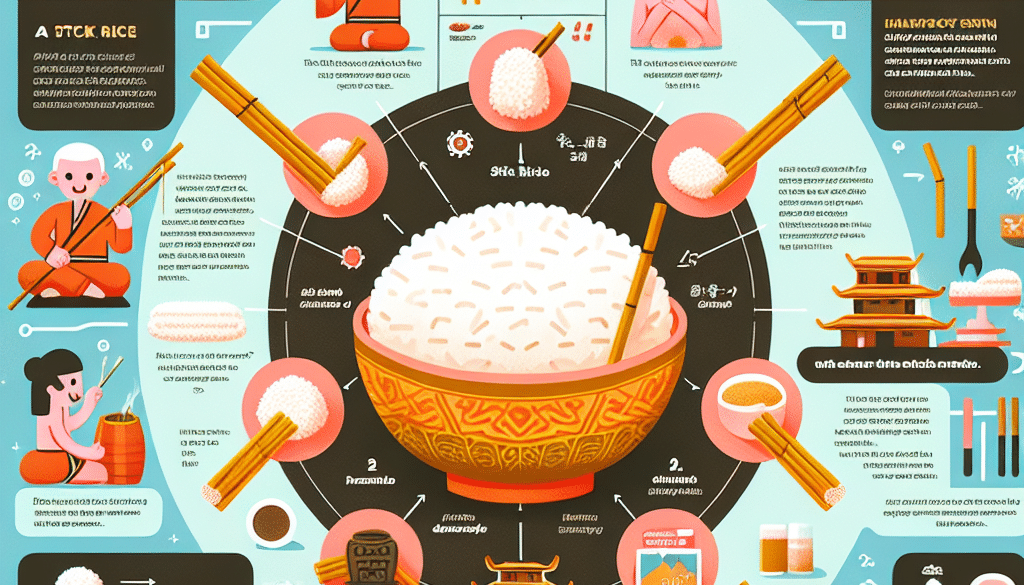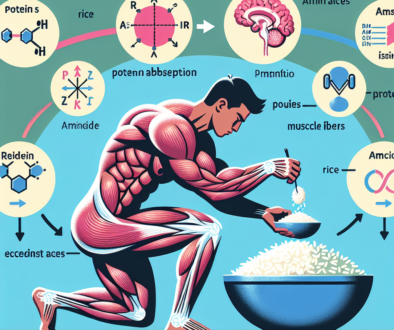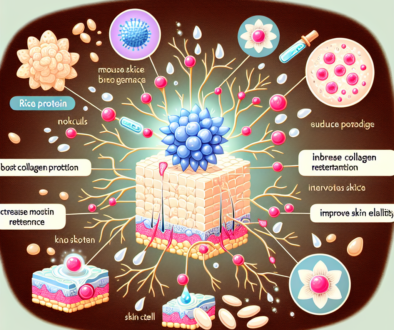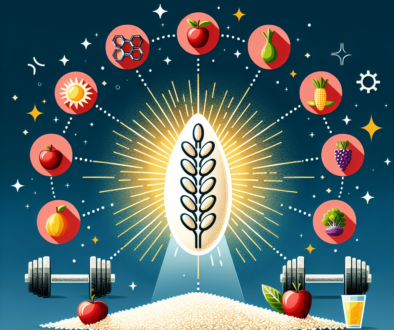Why Do Asians Eat Sticky Rice?
-
Table of Contents
- Sticky Rice: A Staple in Asian Cuisine and Culture
- The Historical Significance of Sticky Rice
- Cultural Importance of Sticky Rice
- Nutritional Value of Sticky Rice
- Why Do Asians Prefer Sticky Rice?
- Regional Variations and Uses of Sticky Rice
- Case Studies: Sticky Rice in Asian Cuisines
- Conclusion: The Enduring Appeal of Sticky Rice
- Discover ETprotein’s High-Quality Protein Products
Sticky Rice: A Staple in Asian Cuisine and Culture
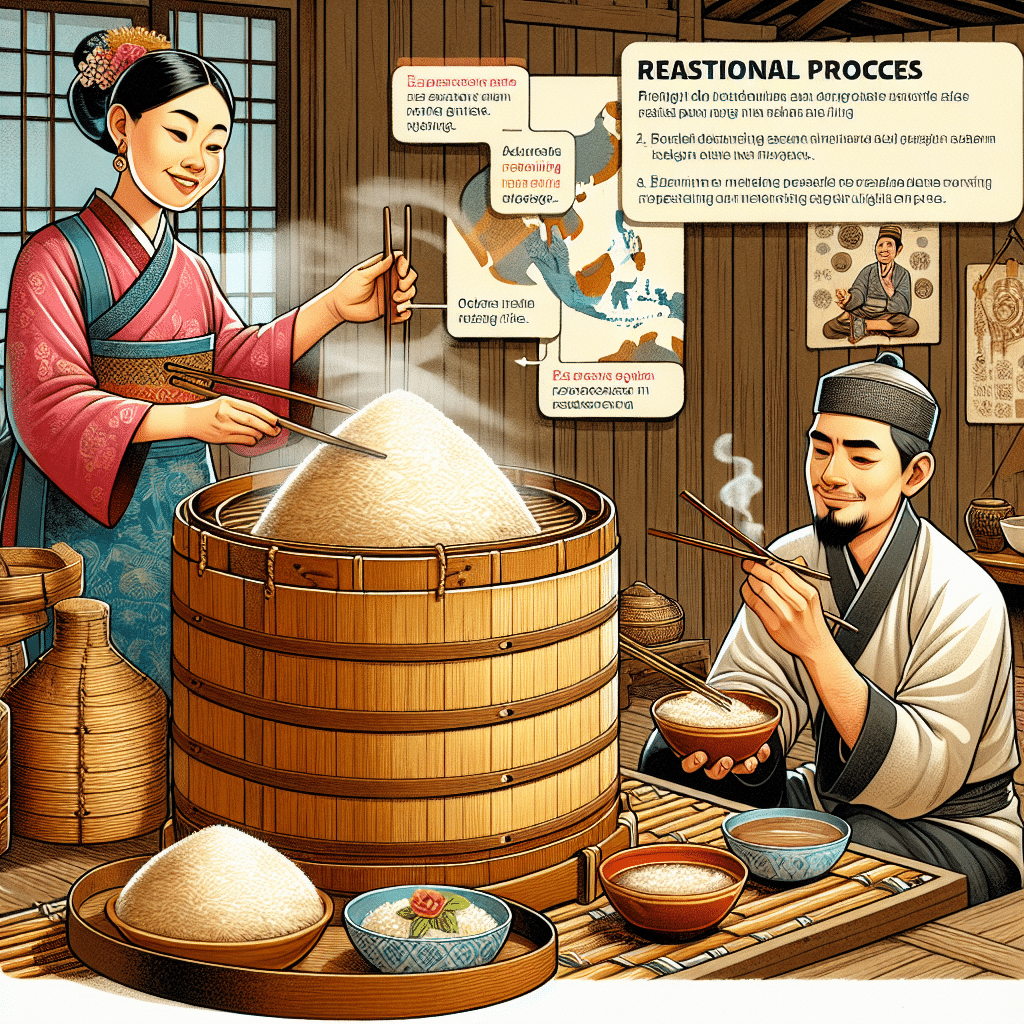
Sticky rice, also known as glutinous rice, is a key staple in many Asian cuisines. Its unique texture and versatility make it a favorite among various cultures across the continent. This article delves into the reasons behind the popularity of sticky rice in Asia, exploring its historical significance, cultural importance, and nutritional value.
The Historical Significance of Sticky Rice
Sticky rice has been cultivated for thousands of years in Asia, with its origins tracing back to China. It has since spread throughout the continent, becoming integral to many traditional dishes. The history of sticky rice is deeply intertwined with the agricultural practices and the development of societies in Asia.
- Sticky rice is well-suited to the wet, tropical climates found in Southeast Asia, where it thrives in the paddy fields.
- Its cultivation has shaped the landscape, with terraced fields becoming a common sight in countries like Vietnam, Thailand, and the Philippines.
- The rice is often associated with festivals and celebrations, symbolizing prosperity and unity.
Cultural Importance of Sticky Rice
Sticky rice is more than just a food item; it is a cultural symbol. It plays a central role in many Asian traditions and rituals.
- In Laos, sticky rice is considered the essence of what it means to be Lao, and it is consumed at every meal.
- In Japan, mochi, a rice cake made from glutinous rice, is a traditional food for the Japanese New Year and other celebrations.
- In China, during the Dragon Boat Festival, zongzi, sticky rice dumplings wrapped in bamboo leaves, are a customary treat.
Nutritional Value of Sticky Rice
Sticky rice is not only culturally significant but also provides nutritional benefits. It is a source of energy and essential nutrients.
- It is a good source of carbohydrates, which are the body’s primary energy source.
- Glutinous rice is low in fat and contains some protein.
- It is gluten-free, making it a suitable option for those with gluten intolerance or celiac disease.
Why Do Asians Prefer Sticky Rice?
The preference for sticky rice in Asian cuisine can be attributed to several factors, including its texture, flavor, and versatility.
- Texture: The stickiness of the rice makes it easy to eat with chopsticks or by hand, which is common in many Asian cultures.
- Flavor: Sticky rice has a distinct, slightly sweet taste that complements a wide range of dishes, from savory to sweet.
- Versatility: It can be steamed, boiled, or fried, and is used in everything from main dishes to desserts.
Regional Variations and Uses of Sticky Rice
Across Asia, sticky rice is used in a myriad of ways, reflecting the diversity of the continent’s culinary traditions.
- In Thailand, sticky rice is often served with mangoes as a dessert known as mango sticky rice.
- In the Philippines, suman is a popular snack made from glutinous rice cooked in coconut milk and often wrapped in banana leaves.
- In Korea, chapssal-tteok is a type of sweet rice cake that is enjoyed during celebrations and special occasions.
Case Studies: Sticky Rice in Asian Cuisines
Several case studies highlight the importance of sticky rice in Asian cuisines:
- A study on the Lao population showed that sticky rice is not only a dietary staple but also a symbol of Lao identity and hospitality.
- Research on the role of mochi in Japan revealed its significance in bringing families together during the New Year and its representation of longevity and prosperity.
- Anthropological studies in China have documented the role of zongzi in commemorating the historical figure Qu Yuan and its significance in the Dragon Boat Festival.
Conclusion: The Enduring Appeal of Sticky Rice
Sticky rice is deeply rooted in the history and culture of Asia. Its unique properties and versatility have made it a beloved staple in many Asian countries. From its role in traditional ceremonies to its everyday presence on the dinner table, sticky rice is a testament to the rich culinary heritage of Asia. The key takeaways from this exploration into why Asians eat sticky rice are its historical significance, cultural importance, nutritional value, and its adaptability in various dishes.
Discover ETprotein’s High-Quality Protein Products
For those looking to incorporate high-quality protein into their diets, ETprotein offers a range of organic and vegan protein products. Their selection includes Organic rice protein, which is an excellent choice for individuals seeking a plant-based protein source that aligns with the culinary preferences discussed in this article.
ETprotein’s products are characterized by their neutral taste, non-GMO, and allergen-free attributes, making them suitable for a wide range of applications. Whether you’re involved in the food and beverage industry or looking for dietary supplements, ETprotein has a solution to meet your protein needs.
About ETprotein:
ETprotein, a reputable protein and L-(+)-Ergothioneine (EGT) Chinese factory manufacturer and supplier, is renowned for producing, stocking, exporting, and delivering the highest quality organic bulk vegan proteins and L-(+)-Ergothioneine. They include Organic rice protein, clear rice protein, pea protein, clear pea protein, watermelon seed protein, pumpkin seed protein, sunflower seed protein, mung bean protein, peanut protein, and L-(+)-Ergothioneine EGT Pharmaceutical grade, L-(+)-Ergothioneine EGT food grade, L-(+)-Ergothioneine EGT cosmetic grade, L-(+)-Ergothioneine EGT reference grade and L-(+)-Ergothioneine EGT standard. Their offerings, characterized by a neutral taste, non-GMO, allergen-free attributes, with L-(+)-Ergothioneine purity over 98%, 99%, cater to a diverse range of industries. They serve nutraceutical, pharmaceutical, cosmeceutical, veterinary, as well as food and beverage finished product distributors, traders, and manufacturers across Europe, USA, Canada, Australia, Thailand, Japan, Korea, Brazil, and Chile, among others.
ETprotein specialization includes exporting and delivering tailor-made protein powder and finished nutritional supplements. Their extensive product range covers sectors like Food and Beverage, Sports Nutrition, Weight Management, Dietary Supplements, Health and Wellness Products, and Infant Formula, ensuring comprehensive solutions to meet all your protein needs.
As a trusted company by leading global food and beverage brands and Fortune 500 companies, ETprotein reinforces China’s reputation in the global arena. For more information or to sample their products, please contact them and email sales(at)ETprotein.com today.

